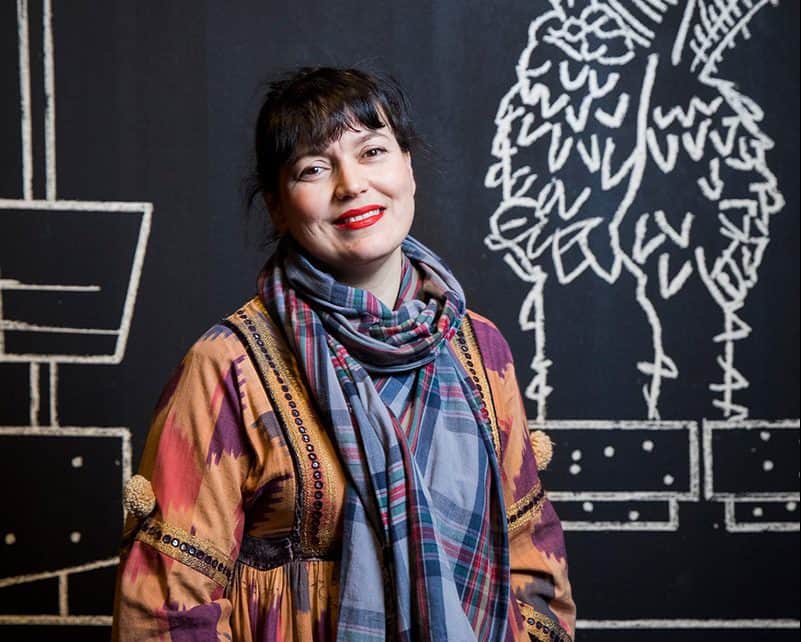
“SHOULD one build on the ruins of a dead city?” ponders a pyjama-clad character in Agadir, a dramatic new installation from Yto Barrada that opened in the Barbican’s Curve gallery last week.
The dead city in question is the Moroccan city of Agadir; flattened by an earthquake in 1960 that killed 15,000 people, but it could just as well have been asked of the exact spot we are standing on – the Barbican itself was built on the site of a bombed out crater following the Blitz.
This juxtaposition certainly isn’t lost on the Moroccan artist, who has filled the cavernous Curve gallery with a series of live performances, sculptures, collages and a new film commission to explore how a city and its people might address the process of reinvention following disaster.

Her starting point was Mohammed Khaïr-Eddine’s 1967 novel of the same name, which features a veritable menagerie of characters – a king, a psychic, a cook, a trade unionist, a parrot, a female warrior – debating how best to rebuild their lives after the earthquake.
On some days, visitors can sit on the wicker furniture arranged throughout the gallery and listen to excerpts of the novel from disembodied voices echoing above. Other times, live performers take on the roles, flitting between the characters fluidly as they weave up and down the gallery.
This the first time the novel has been translated into English, and the breadth of subject matter covered in the debate – from the US food trade to a serpent queen – and the quick transitions of the actors between roles requires a concerted effort to keep up.

But the overall effect appropriately illustrates the magnitude of issues facing a post-disaster society, a point rammed home by newspaper clippings covering riots, disease and displacement along one wall.
At the end of the gallery, we arrive at Barrada’s eight-minute movie cut together using newsreel footage of the devastation – buildings reduced to rubble, helpless rescue efforts, household items strewn across the scene – and powerful interviews with survivors.
One young woman is asked about life before the earthquake and details, with half a smile, her plans to buy a car with her husband and travel through Spain. We see the realisation that the driving holiday will never come to fruition, before her face crumbles.
But there is hope in the form of a vast mural of sketches along the gallery’s outer wall. Some depict scenes from before the earthquake, but the majority show the modernist buildings constructed after the disaster; a shopping mall, a public garden, signs of post-colonial Agadir emerging from the devastation.
This ‘rebirth’ receives less airtime in the exhibition than the immediate aftermath of the disaster itself, but the simple sketches looming large over the rest of the action seem to suggest an answer to Khaïr-Eddine’s question in the affirmative. As do the walls they appear on; another example of a dead city rebuilt.






